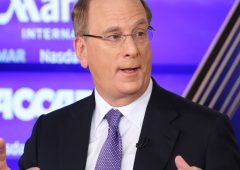Bitcoin Struggles in Q1: Will Accumulation Signal a Comeback?
01.04.2025 19:00 2 min. read Alexander Stefanov
Bitcoin’s start to 2025 has been rough, marking its worst first quarter in seven years.
The cryptocurrency saw its value drop by about 11.82%, falling from $106,000 in late 2024 to around $80,200 by the end of March. This downturn, attributed to economic challenges and new tariff policies from U.S. President Donald Trump, contrasts sharply with the 68% surge in the same period last year.
Despite the slump, some large investors are doubling down. Data from Santiment shows an increase in whale addresses holding between 1,000 and 10,000 BTC, reaching the highest level since December 2024.
This suggests growing confidence among major holders. At the same time, trading activity among short-term BTC holders has hit a low not seen since mid-2021, indicating that recent buyers are holding rather than selling.
Additionally, Bitcoin’s supply on exchanges has dropped to 7.53%, the lowest since February 2018, signaling that investors may be opting for long-term holding.
Analyst Axel Adler Jr. predicts a consolidation phase over the next couple of months, suggesting that selling pressure has eased.
Fidelity Research also sees potential for a rebound, suggesting that Bitcoin may be entering a phase of renewed momentum, driven by institutional adoption and its role as an inflation hedge. As whales continue accumulating and exchange supply decreases, some experts believe the groundwork is being laid for a recovery.
-
1
El Salvador’s Bitcoin Bet Pays Off With Over $350M in Unrealized Gains
20.05.2025 12:00 2 min. read -
2
Here’s What Prediction Markets Are Saying About Bitcoin’s Next Move
23.05.2025 10:00 2 min. read -
3
Metaplanet Nearly Doubles Bitcoin Holdings in Seven Weeks, Now Holds 7,800 BTC
19.05.2025 20:00 2 min. read -
4
Michael Saylor’s Strategy Expands Bitcoin Holdings Again, Adds Over $400M in Latest Buy
26.05.2025 15:54 1 min. read -
5
Central Banks Are Buying Gold, Not Bitcoin — Peter Schiff Says That Speaks Volumes
25.05.2025 8:00 2 min. read
The Bitcoin-Cardano Bridge is Here: What it Means for DeFi
Cardano has launched Cardinal, a pivotal protocol aiming to bridge Bitcoin’s vast liquidity with Cardano’s decentralized finance (DeFi) ecosystem.
Bitcoin Nears Key Support Levels Amid Growing Market Uncertainty
Bitcoin’s price recently dipped to $100,000 but swiftly rebounded, climbing above $110,000 after renewed dialogue between the U.S. and China helped ease global market tensions.
Quantum Computing Won’t Kill Bitcoin, Says Michael Saylor
Michael Saylor, the executive chairman of Strategy and one of Bitcoin’s most outspoken supporters, believes fears over quantum computing are being blown out of proportion.
Cathie Wood Stands Firm on Bold $1.5M Bitcoin Target by 2030
While Bitcoin hovers just above $105,000, ARK Invest’s Cathie Wood isn’t backing down from her long-held view that the asset could hit $1.5 million within five years.
-
1
El Salvador’s Bitcoin Bet Pays Off With Over $350M in Unrealized Gains
20.05.2025 12:00 2 min. read -
2
Here’s What Prediction Markets Are Saying About Bitcoin’s Next Move
23.05.2025 10:00 2 min. read -
3
Metaplanet Nearly Doubles Bitcoin Holdings in Seven Weeks, Now Holds 7,800 BTC
19.05.2025 20:00 2 min. read -
4
Michael Saylor’s Strategy Expands Bitcoin Holdings Again, Adds Over $400M in Latest Buy
26.05.2025 15:54 1 min. read -
5
Central Banks Are Buying Gold, Not Bitcoin — Peter Schiff Says That Speaks Volumes
25.05.2025 8:00 2 min. read


